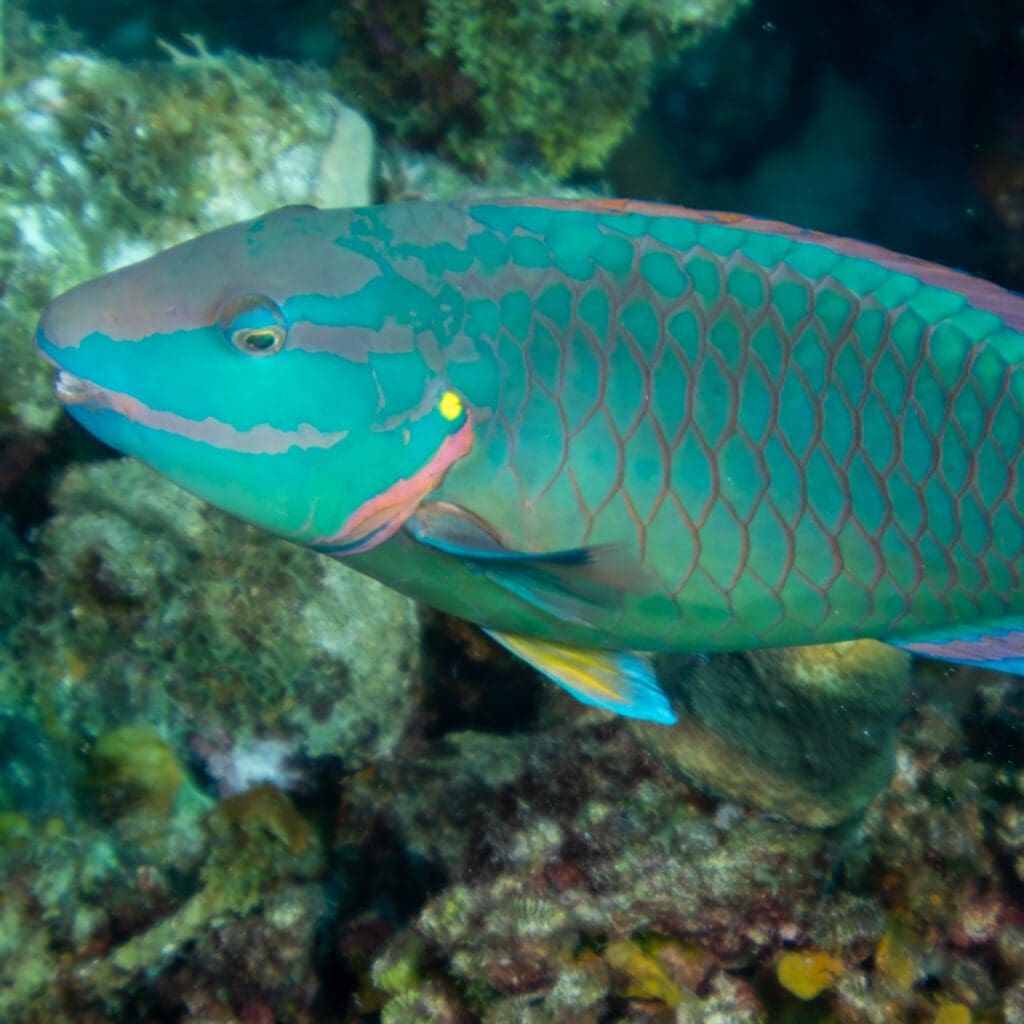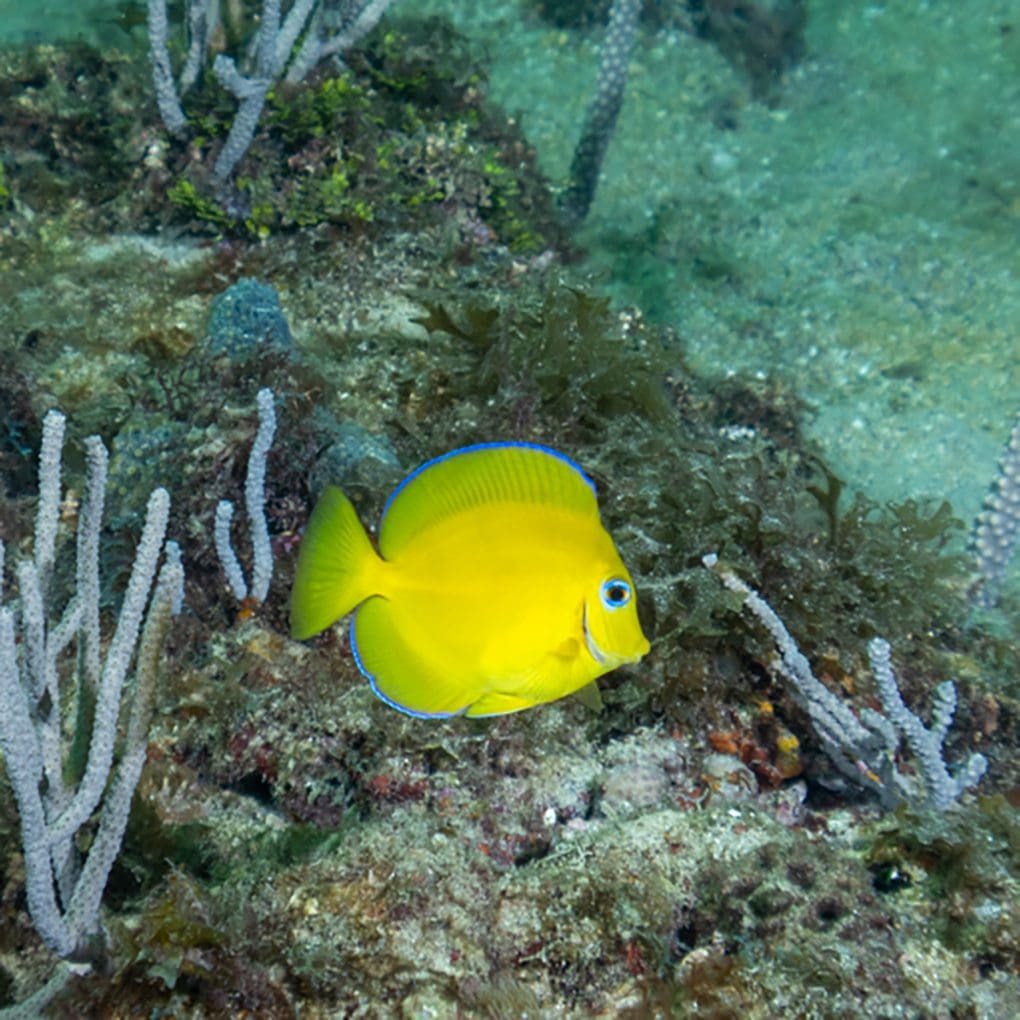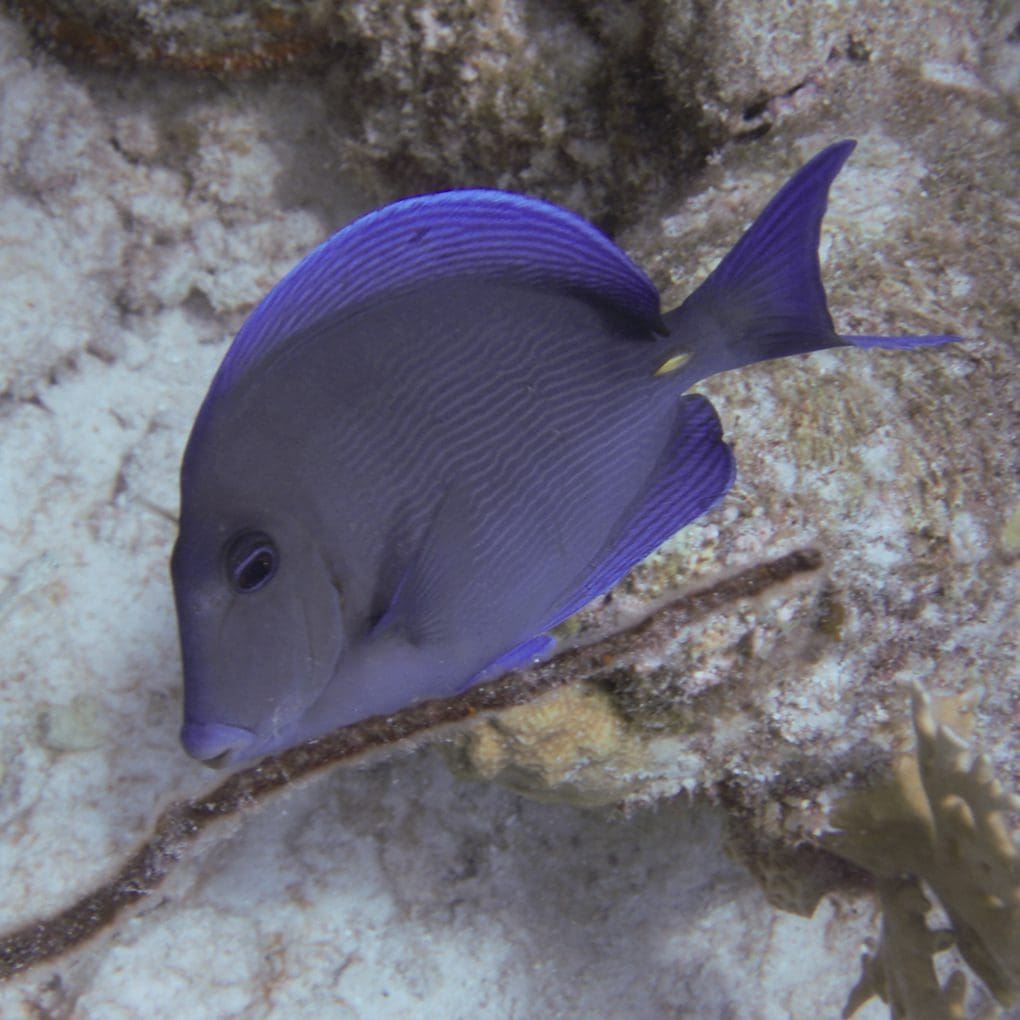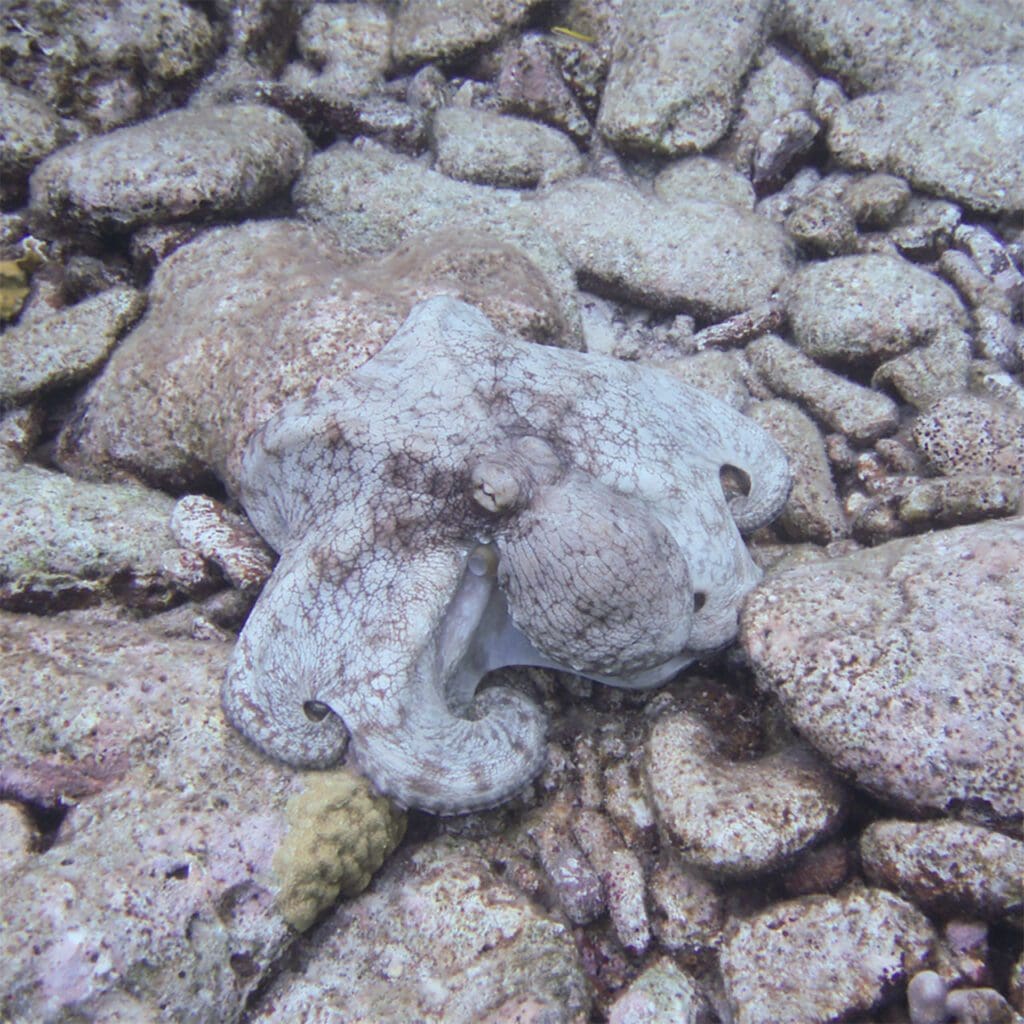Saltwater reef fish have some of the most interesting and confusing color morphs you can imagine. You aren’t the first novice scuba diver who thinks they’ve seen a new fish, but it’s actually just the juvenile version of a fish they’ve seen 100 times. Have they come out of the closet? Here’s a pro tip: invest in an eraseable slate. They are inexpensive and make a great way to say “what the heck is that?” when you’re on the dive. It’s much better than asking your buddy after the dive: “you remember that beautiful blue fish with the green eyes… what was that?”
And then there are the masters of disguise, the camouflage magicians known as the reef octopus. These animals can and will change colors right before your eyes! Cannot tell you how many times a new diver has seen a rock move and thus found their first reef octopus. (If you haven’t seen the 2020 documentary My Octopus Teacher, make it a point to download and watch it as soon as you can. It’s a moving film and a great exploration of these tricky little guys.)
Don’t get us started about some of the amazing differences between genders. You think fish don’t think about gender? Check out Gender roles underwater.
In this article, though, we want to focus on the fascinating ability of adult fish to look nothing like their childhood selves. The following are just a few of the many juvenile to adult color changes we see every time we dive the reefs of South Florida. Earn your Fish I.D. merit badge and follow along with us.
Queen Angelfish


The queen angelfish, Holacanthus ciliaris, is a vibrant colored fish found on the reefs of Fort Lauderdale and South Florida. They thrive in warm, shallow areas where they can find ample hiding spots among the coral formations. Their diet primarily consists of sponges, algae, and small invertebrates, making them vital contributors to the ecosystem’s balance. As juveniles, queen angelfish are adorned with dark blue bodies and bold, yellow vertical bars. As they mature into adults, their coloration transforms into a striking palette of vibrant blues and yellows, with a distinctive “crown” of blue and yellow spots on their heads, fitting for their regal name. This transition showcases the beauty and complexity of their growth stages.
Stoplight Parrotfish


The stoplight parrotfish, Sparisoma viride, is a vibrant reef-dwelling fish commonly found here in South Florida and throughout the Caribbean, particularly around coral reefs. They feed primarily on algae and dead coral, which helps maintain the health of the reef ecosystem. Their name comes from their distinctive color changes as they age. Juveniles are adorned with reddish-brown bodies dotted with white spots and bright yellow fins, but as they mature, they transition through various phases. Terminal-phase males display a striking pattern of green and blue with yellow highlights near the tail, and a bright yellow spot near the gill resembling a “stoplight.” But you ask, “aren’t stoplights red?” Our only guess is that “caution light parrotfish” just didn’t have the same ring to it.
Atlantic Blue Tang


The Atlantic blue tang, Acanthurus coeruleus, is a striking marine fish commonly found from Florida and the Caribbean to the coast of South America. It inhabits coral reefs and rocky coastal areas, thriving in environments with abundant algae, which constitutes its primary diet. The Atlantic blue tang plays an essential role in reef ecosystems by grazing on algae and preventing its overgrowth. As juveniles, these fish are bright yellow with a blue-edged tail, blending seamlessly with their surroundings. As they mature into adults, their coloration shifts to vibrant shades of blue with subtle variations, ranging from light to deep hues, while the yellow is replaced entirely.
All images are courtesy of Christopher Duncan and Copyright 2025 CDA Underwater Photography. All rights reserved worldwide.

